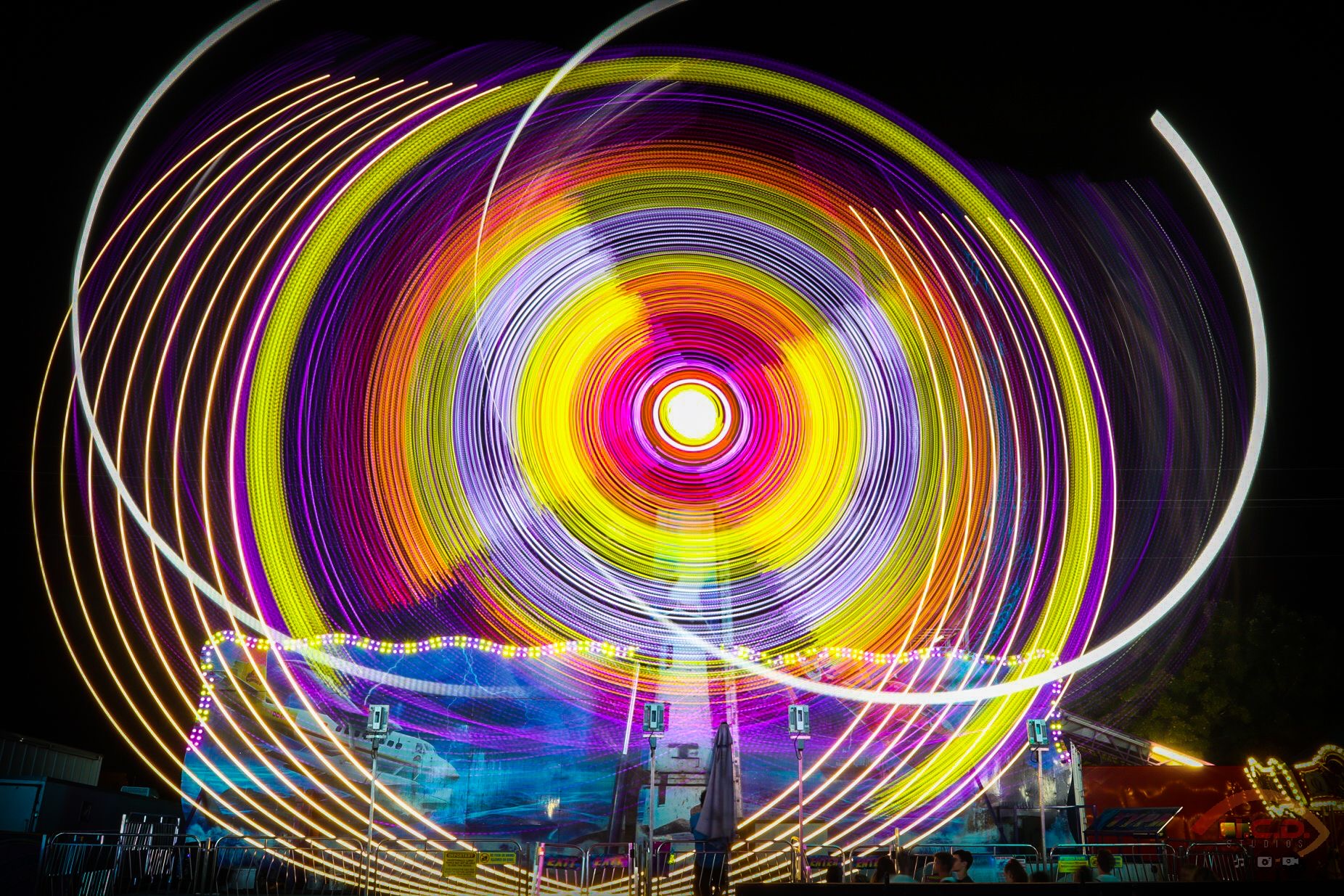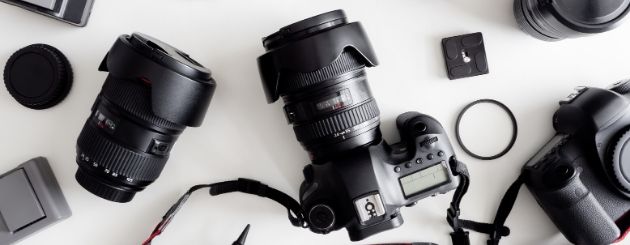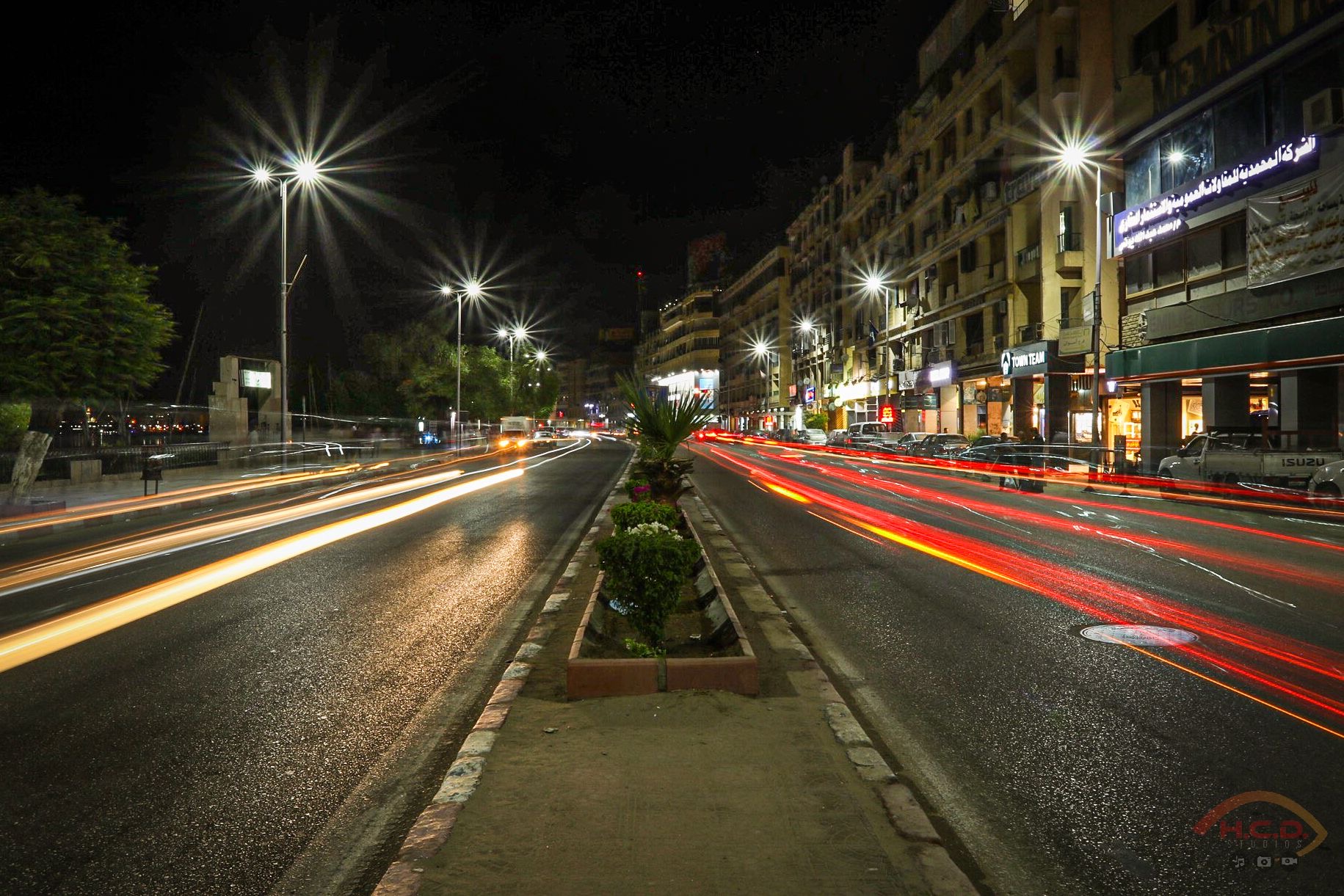Night Photography Techniques for Beginners
night photography
Photography
Gear Focus
Jun 19, 2020

When someone begins their photography journey, they usually have an idea of what they want to take pictures of. They might want to take pictures of their family, pets, or nature, all of which are a lot of fun and great practice. But there’s one common mistake new photographers can make, and that’s not shooting in different lighting scenarios like night photography. As new photographers continue to grow, they usually want to try other styles and learn even more (and there’s plenty to learn). The problem is when the new photographer realizes that they’ve always shot photographs in daylight or well-lit scenarios. One of the most fascinating photography styles is night photography, whether you’re merely shooting in a dark setting or trying to capture the beauty of the Milky Way. But before someone can successfully capture sharp night photos, they need some basic techniques under their belt. If you’re looking for some help, we put together this guide about night photography techniques for beginners.
https://youtu.be/JJdA1eRFN6k
 The solution? Use manual mode. You knew this suggestion was coming, but every photographer needs to venture out of their comfort zone and start using manual mode sooner or later. The main reason to shoot in manual mode when learning night photography techniques, is simply that it allows you to have complete control of the camera’s settings, including where the camera will focus. Now, we understand that you might not be completely comfortable in manual mode yet, and that’s okay, as mastering this mode takes time and practice. Another option is shooting in a priority mode. Modern DSLR cameras have several modes to choose from, and two of them are aperture priority and shutter priority.
When shooting at night, you’re probably going to want aperture priority (if not manual). The reason is that you need to get as much as light into your camera’s sensor as possible, otherwise you’re not going to have proper exposure. The best part about using priority mode is that you only need to worry about whatever you’re prioritizing. For instance, if you’re using aperture priority mode, the camera will automatically adjust your shutter speed to something appropriate for your environment. In shutter priority mode, you’ll only need to call the shots (no pun intended) with your shutter speed, and the camera will take care of aperture.
The solution? Use manual mode. You knew this suggestion was coming, but every photographer needs to venture out of their comfort zone and start using manual mode sooner or later. The main reason to shoot in manual mode when learning night photography techniques, is simply that it allows you to have complete control of the camera’s settings, including where the camera will focus. Now, we understand that you might not be completely comfortable in manual mode yet, and that’s okay, as mastering this mode takes time and practice. Another option is shooting in a priority mode. Modern DSLR cameras have several modes to choose from, and two of them are aperture priority and shutter priority.
When shooting at night, you’re probably going to want aperture priority (if not manual). The reason is that you need to get as much as light into your camera’s sensor as possible, otherwise you’re not going to have proper exposure. The best part about using priority mode is that you only need to worry about whatever you’re prioritizing. For instance, if you’re using aperture priority mode, the camera will automatically adjust your shutter speed to something appropriate for your environment. In shutter priority mode, you’ll only need to call the shots (no pun intended) with your shutter speed, and the camera will take care of aperture.
 Photo Credit: Brian Potts[/caption]
The next setting you must master is shutter speed, because it can significantly increase or decrease the quality of your photos. In most low-light scenarios, you’re going to need a slower shutter speed. For instance, let’s say you’re taking an image of the night sky. You’re probably looking to get the stars sharp in your image, as well as capture the vibrant colors. In order to capture both the stars and colors, you need a lot of exposure and light coming into your camera. To do that, you should have a long shutter speed and a wide aperture. Some common settings could be f/2.8 at 30 seconds. Yes, you read that right, 30 seconds where the camera cannot move at all. The reason you want such a slow shutter speed is that you’ll be gathering 30 seconds’ worth of light. Now, that’s not to say you have to start at 30 seconds, and for a lot of dark scenarios, it will be fine to start around 10 seconds and adjust from there. If your image is still too dark, make your shutter speed longer, and if the image is too bright, decrease the shutter speed.
Photo Credit: Brian Potts[/caption]
The next setting you must master is shutter speed, because it can significantly increase or decrease the quality of your photos. In most low-light scenarios, you’re going to need a slower shutter speed. For instance, let’s say you’re taking an image of the night sky. You’re probably looking to get the stars sharp in your image, as well as capture the vibrant colors. In order to capture both the stars and colors, you need a lot of exposure and light coming into your camera. To do that, you should have a long shutter speed and a wide aperture. Some common settings could be f/2.8 at 30 seconds. Yes, you read that right, 30 seconds where the camera cannot move at all. The reason you want such a slow shutter speed is that you’ll be gathering 30 seconds’ worth of light. Now, that’s not to say you have to start at 30 seconds, and for a lot of dark scenarios, it will be fine to start around 10 seconds and adjust from there. If your image is still too dark, make your shutter speed longer, and if the image is too bright, decrease the shutter speed.
 Now that you have a solid foundation on your camera’s settings, you need to take inventory of your gear. First, what lenses do you have? Like we previously mentioned, if you’re using the lens that came with your camera, you probably don’t have a very large aperture to work with. We’d encourage you to invest in another lens like the Canon EF 24-104 F/4 for better results and the ability to reframe your composition without moving around your camera and tripod. While you could probably get by with the lens that came with your camera, there’s one piece of equipment that’s non-negotiable when dabbling in night photography, and that’s a tripod. Since you’re going to be using much slower shutter speeds, the camera must remain still during the entire time. Otherwise, you’re going to experience image blurring and you’re going to be unhappy with the result, so invest in a solid tripod.
[caption id="attachment_2441" align="alignnone" width="1831"]
Now that you have a solid foundation on your camera’s settings, you need to take inventory of your gear. First, what lenses do you have? Like we previously mentioned, if you’re using the lens that came with your camera, you probably don’t have a very large aperture to work with. We’d encourage you to invest in another lens like the Canon EF 24-104 F/4 for better results and the ability to reframe your composition without moving around your camera and tripod. While you could probably get by with the lens that came with your camera, there’s one piece of equipment that’s non-negotiable when dabbling in night photography, and that’s a tripod. Since you’re going to be using much slower shutter speeds, the camera must remain still during the entire time. Otherwise, you’re going to experience image blurring and you’re going to be unhappy with the result, so invest in a solid tripod.
[caption id="attachment_2441" align="alignnone" width="1831"] Photo Credit: Brian Potts[/caption]
Whether you’ve already given night photography a try or not, we hope this guide to night photography techniques for beginners provides some insight. In fact, the most common mistake new photographers make when shooting at night is not having a tripod. New photographers usually understand that they need a slower shutter speed and a wider aperture, but for some reason, they seem to think they can be still for 10+ seconds. Think again, as you need a tripod and possibly another lens!
Buying used gear is a great way to get quality gear without completely breaking the bank. If you’re looking to improve the gear in your arsenal, check out Gear Focus. We have plenty of new and used tripods for sale, along with lenses, camera bodies, gimbals, and so much more. Check out our online shop today and invest in your passion.
Check out our handy Infographic on getting started with Night Photography below
Photo Credit: Brian Potts[/caption]
Whether you’ve already given night photography a try or not, we hope this guide to night photography techniques for beginners provides some insight. In fact, the most common mistake new photographers make when shooting at night is not having a tripod. New photographers usually understand that they need a slower shutter speed and a wider aperture, but for some reason, they seem to think they can be still for 10+ seconds. Think again, as you need a tripod and possibly another lens!
Buying used gear is a great way to get quality gear without completely breaking the bank. If you’re looking to improve the gear in your arsenal, check out Gear Focus. We have plenty of new and used tripods for sale, along with lenses, camera bodies, gimbals, and so much more. Check out our online shop today and invest in your passion.
Check out our handy Infographic on getting started with Night Photography below

Shoot in manual or a priority mode
While many of the newer DSLRs have better autofocus modes than previous models, autofocus still isn’t perfect. Because your light exposure is minimal during night photography, that also means your camera can’t see objects clearly. When using autofocus, your camera focuses on what it thinks your subject is, and that sometimes works fine, but a lot of the time, it’s not focusing where you want it to. The solution? Use manual mode. You knew this suggestion was coming, but every photographer needs to venture out of their comfort zone and start using manual mode sooner or later. The main reason to shoot in manual mode when learning night photography techniques, is simply that it allows you to have complete control of the camera’s settings, including where the camera will focus. Now, we understand that you might not be completely comfortable in manual mode yet, and that’s okay, as mastering this mode takes time and practice. Another option is shooting in a priority mode. Modern DSLR cameras have several modes to choose from, and two of them are aperture priority and shutter priority.
When shooting at night, you’re probably going to want aperture priority (if not manual). The reason is that you need to get as much as light into your camera’s sensor as possible, otherwise you’re not going to have proper exposure. The best part about using priority mode is that you only need to worry about whatever you’re prioritizing. For instance, if you’re using aperture priority mode, the camera will automatically adjust your shutter speed to something appropriate for your environment. In shutter priority mode, you’ll only need to call the shots (no pun intended) with your shutter speed, and the camera will take care of aperture.
The solution? Use manual mode. You knew this suggestion was coming, but every photographer needs to venture out of their comfort zone and start using manual mode sooner or later. The main reason to shoot in manual mode when learning night photography techniques, is simply that it allows you to have complete control of the camera’s settings, including where the camera will focus. Now, we understand that you might not be completely comfortable in manual mode yet, and that’s okay, as mastering this mode takes time and practice. Another option is shooting in a priority mode. Modern DSLR cameras have several modes to choose from, and two of them are aperture priority and shutter priority.
When shooting at night, you’re probably going to want aperture priority (if not manual). The reason is that you need to get as much as light into your camera’s sensor as possible, otherwise you’re not going to have proper exposure. The best part about using priority mode is that you only need to worry about whatever you’re prioritizing. For instance, if you’re using aperture priority mode, the camera will automatically adjust your shutter speed to something appropriate for your environment. In shutter priority mode, you’ll only need to call the shots (no pun intended) with your shutter speed, and the camera will take care of aperture.
Use a wide aperture and slow shutter speed
By now you’re probably wondering what settings you need. Well, first and foremost, you need to stop and consider your environment. It’s dark, which means there’s limited light, so in order to get the shot you need a lot of light to reach your camera’s sensor. How do you adjust your camera, you ask? Through your camera’s aperture and shutter speed. In order to let as much light into your camera as possible, you’re going to need a large aperture (or small f-stop). Your largest aperture depends entirely on the lens––or lenses––you have. Most beginner cameras are going to come with a lens that’s in the range of 18-55mm, with the largest f-stop being 3.5. Shooting with f/3.5 could work, but you should have a lens that can reach f/1.8 for the best results. When it comes to f-stops, it’s better to have more room to work with than not enough. [caption id="attachment_2438" align="alignnone" width="1852"] Photo Credit: Brian Potts[/caption]
The next setting you must master is shutter speed, because it can significantly increase or decrease the quality of your photos. In most low-light scenarios, you’re going to need a slower shutter speed. For instance, let’s say you’re taking an image of the night sky. You’re probably looking to get the stars sharp in your image, as well as capture the vibrant colors. In order to capture both the stars and colors, you need a lot of exposure and light coming into your camera. To do that, you should have a long shutter speed and a wide aperture. Some common settings could be f/2.8 at 30 seconds. Yes, you read that right, 30 seconds where the camera cannot move at all. The reason you want such a slow shutter speed is that you’ll be gathering 30 seconds’ worth of light. Now, that’s not to say you have to start at 30 seconds, and for a lot of dark scenarios, it will be fine to start around 10 seconds and adjust from there. If your image is still too dark, make your shutter speed longer, and if the image is too bright, decrease the shutter speed.
Photo Credit: Brian Potts[/caption]
The next setting you must master is shutter speed, because it can significantly increase or decrease the quality of your photos. In most low-light scenarios, you’re going to need a slower shutter speed. For instance, let’s say you’re taking an image of the night sky. You’re probably looking to get the stars sharp in your image, as well as capture the vibrant colors. In order to capture both the stars and colors, you need a lot of exposure and light coming into your camera. To do that, you should have a long shutter speed and a wide aperture. Some common settings could be f/2.8 at 30 seconds. Yes, you read that right, 30 seconds where the camera cannot move at all. The reason you want such a slow shutter speed is that you’ll be gathering 30 seconds’ worth of light. Now, that’s not to say you have to start at 30 seconds, and for a lot of dark scenarios, it will be fine to start around 10 seconds and adjust from there. If your image is still too dark, make your shutter speed longer, and if the image is too bright, decrease the shutter speed.
Try to steer clear of boosting ISO
ISO always causes debates among photographers because while it’s helpful, it can also severely reduce your image quality. If you don’t remember, ISO is essentially “fake light,” in the words of Peter McKinnon. So, naturally, if you’re shooting at night, you want to boost your ISO to a setting like 3200. However, a high ISO like 3200 is almost guaranteed to ruin your shot with digital noise. There may be some scenarios where a super high ISO is necessary, but for the best quality images, try to keep your ISO as low as possible. Pro tip: Since you’re still a beginner and getting the hang of night photography, check your camera’s ISO settings. A lot of cameras will come out of the box with auto-ISO activated, and we suggest setting it to 100 and only increasing the ISO when necessary.You’re going to need the right camera gear
 Now that you have a solid foundation on your camera’s settings, you need to take inventory of your gear. First, what lenses do you have? Like we previously mentioned, if you’re using the lens that came with your camera, you probably don’t have a very large aperture to work with. We’d encourage you to invest in another lens like the Canon EF 24-104 F/4 for better results and the ability to reframe your composition without moving around your camera and tripod. While you could probably get by with the lens that came with your camera, there’s one piece of equipment that’s non-negotiable when dabbling in night photography, and that’s a tripod. Since you’re going to be using much slower shutter speeds, the camera must remain still during the entire time. Otherwise, you’re going to experience image blurring and you’re going to be unhappy with the result, so invest in a solid tripod.
[caption id="attachment_2441" align="alignnone" width="1831"]
Now that you have a solid foundation on your camera’s settings, you need to take inventory of your gear. First, what lenses do you have? Like we previously mentioned, if you’re using the lens that came with your camera, you probably don’t have a very large aperture to work with. We’d encourage you to invest in another lens like the Canon EF 24-104 F/4 for better results and the ability to reframe your composition without moving around your camera and tripod. While you could probably get by with the lens that came with your camera, there’s one piece of equipment that’s non-negotiable when dabbling in night photography, and that’s a tripod. Since you’re going to be using much slower shutter speeds, the camera must remain still during the entire time. Otherwise, you’re going to experience image blurring and you’re going to be unhappy with the result, so invest in a solid tripod.
[caption id="attachment_2441" align="alignnone" width="1831"] Photo Credit: Brian Potts[/caption]
Whether you’ve already given night photography a try or not, we hope this guide to night photography techniques for beginners provides some insight. In fact, the most common mistake new photographers make when shooting at night is not having a tripod. New photographers usually understand that they need a slower shutter speed and a wider aperture, but for some reason, they seem to think they can be still for 10+ seconds. Think again, as you need a tripod and possibly another lens!
Buying used gear is a great way to get quality gear without completely breaking the bank. If you’re looking to improve the gear in your arsenal, check out Gear Focus. We have plenty of new and used tripods for sale, along with lenses, camera bodies, gimbals, and so much more. Check out our online shop today and invest in your passion.
Check out our handy Infographic on getting started with Night Photography below
Photo Credit: Brian Potts[/caption]
Whether you’ve already given night photography a try or not, we hope this guide to night photography techniques for beginners provides some insight. In fact, the most common mistake new photographers make when shooting at night is not having a tripod. New photographers usually understand that they need a slower shutter speed and a wider aperture, but for some reason, they seem to think they can be still for 10+ seconds. Think again, as you need a tripod and possibly another lens!
Buying used gear is a great way to get quality gear without completely breaking the bank. If you’re looking to improve the gear in your arsenal, check out Gear Focus. We have plenty of new and used tripods for sale, along with lenses, camera bodies, gimbals, and so much more. Check out our online shop today and invest in your passion.
Check out our handy Infographic on getting started with Night Photography below

Own one like this?
Make room for new gear in minutes.
Loading...
